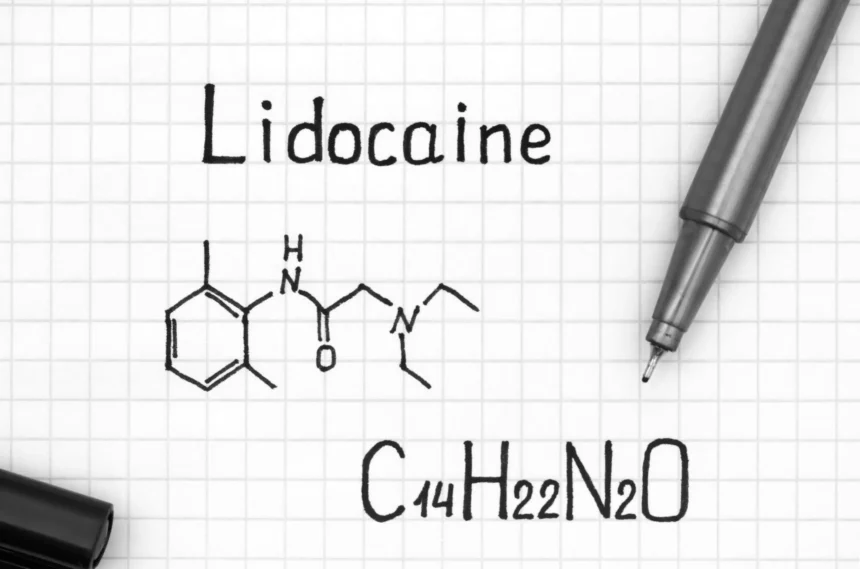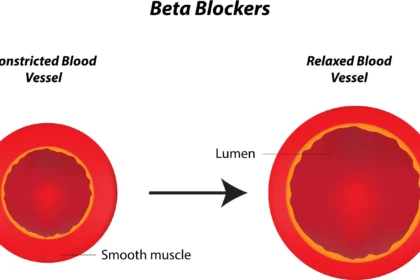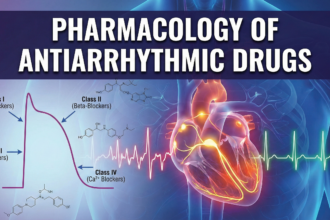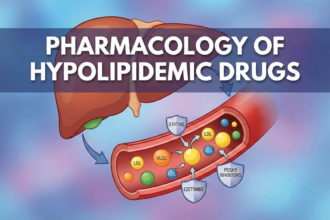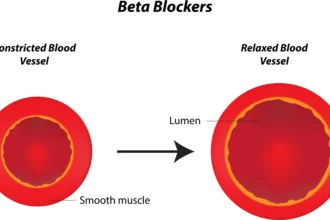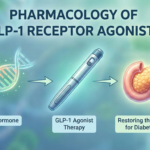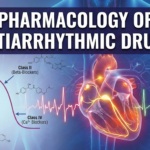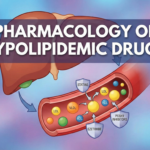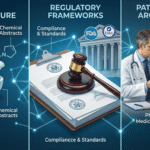Pharmacology of Antiarrhythmic Drugs
1. Introduction to Cardiac Electrophysiology Understanding antiarrhythmic drugs requires a foundational understanding…
Pharmacology of Hypolipidemic Drugs
1. Introduction to Lipoproteins and Lipid Metabolism Hyperlipidemia (or dyslipidemia) is defined…
Antiarrhythmics – A quick summary
I. Introduction and Electrophysiological Basis Cardiac arrhythmias are disorders of the heart…
Pharmacology of Antiarrhythmic Agents: A Comprehensive Overview
Introduction Cardiac arrhythmias—or disturbances in the normal electrical rhythm of the heart—represent…
Pharmacotherapy of Angina Pectoris
Introduction Angina pectoris, often referred to simply as angina, is chest pain…
Pharmacology of Propranolol
Introduction Propranolol, a beta-adrenergic blocker, has been a mainstay in the treatment…
Pharmacology of Amiodarone
Introduction Amiodarone is a potent, pleiotropic antiarrhythmic agent classified as a Vaughan-Williams Class…
Pharmacology of Lidocaine
Introduction Lidocaine is one of the most commonly used local anesthetics and antiarrhythmic agents in clinical medicine.…
Miscellaneous Antiarrhythmic Agents: Adenosine and others
Adenosine Adenosine is antiarrhythmic agent that is widely used for the investigation…
Class 4 Antiarrhythmic Drugs: Verapamil and Diltiazem
Verapamil and diltiazem are non‑dihydropyridine calcium channel blockers classified as Class IV antiarrhythmics,…




